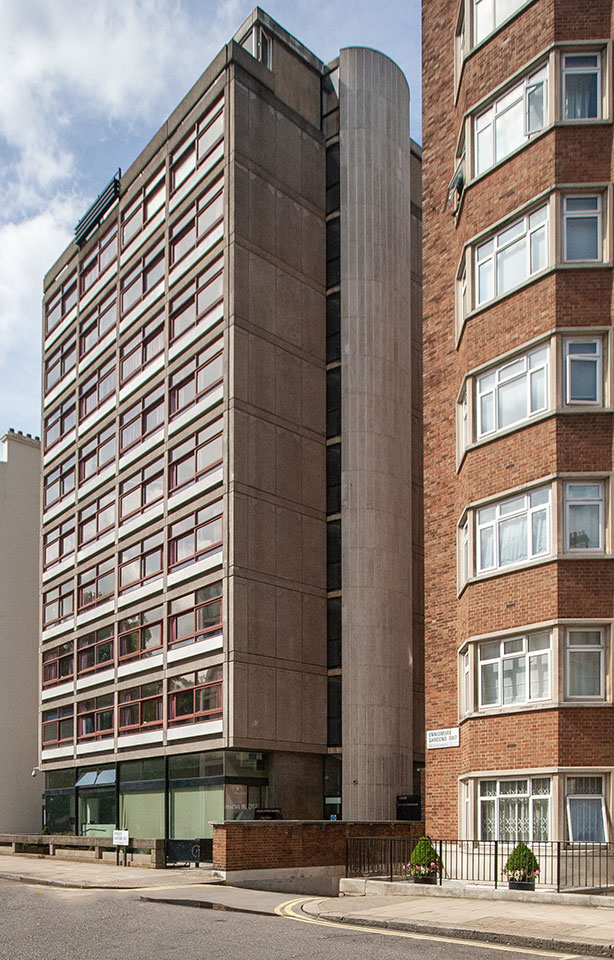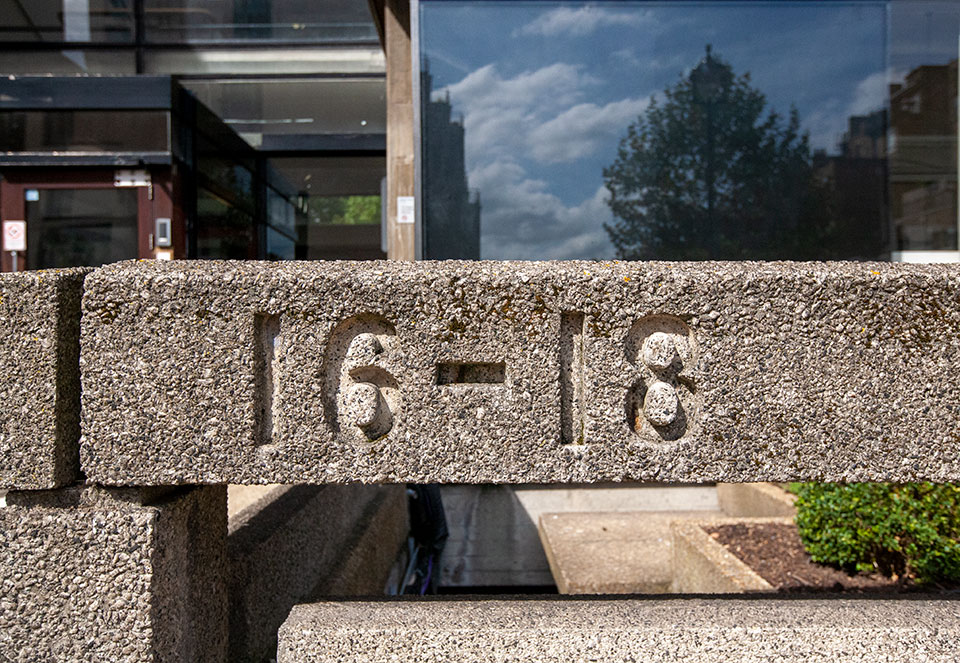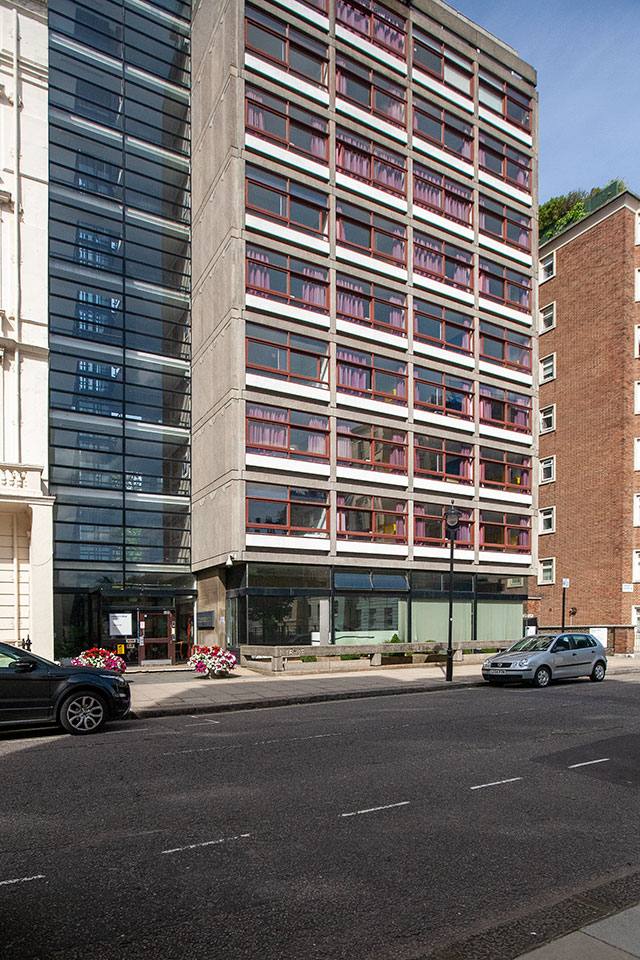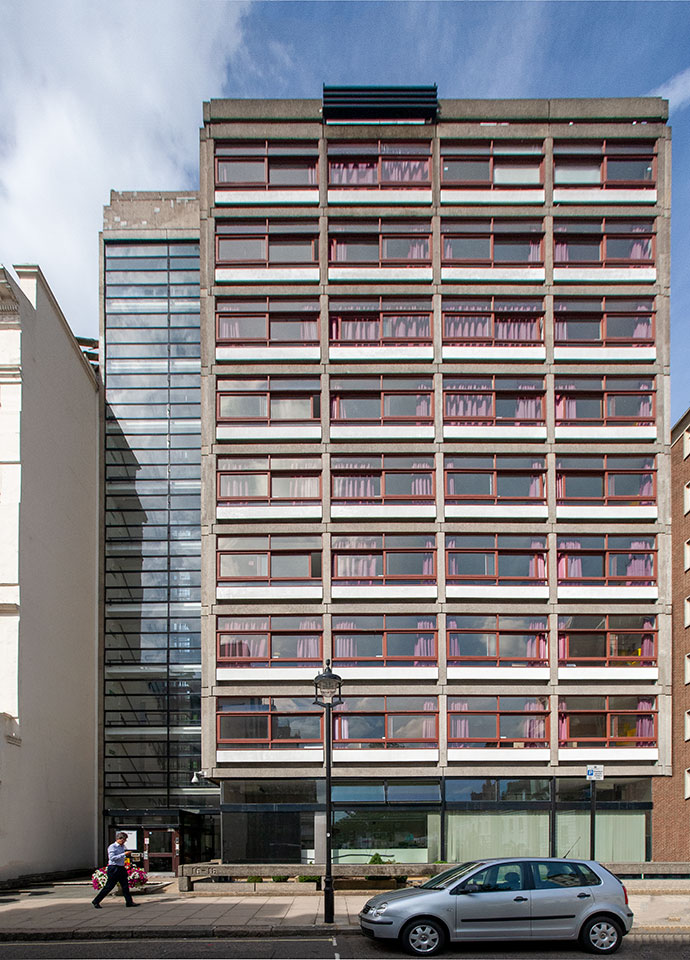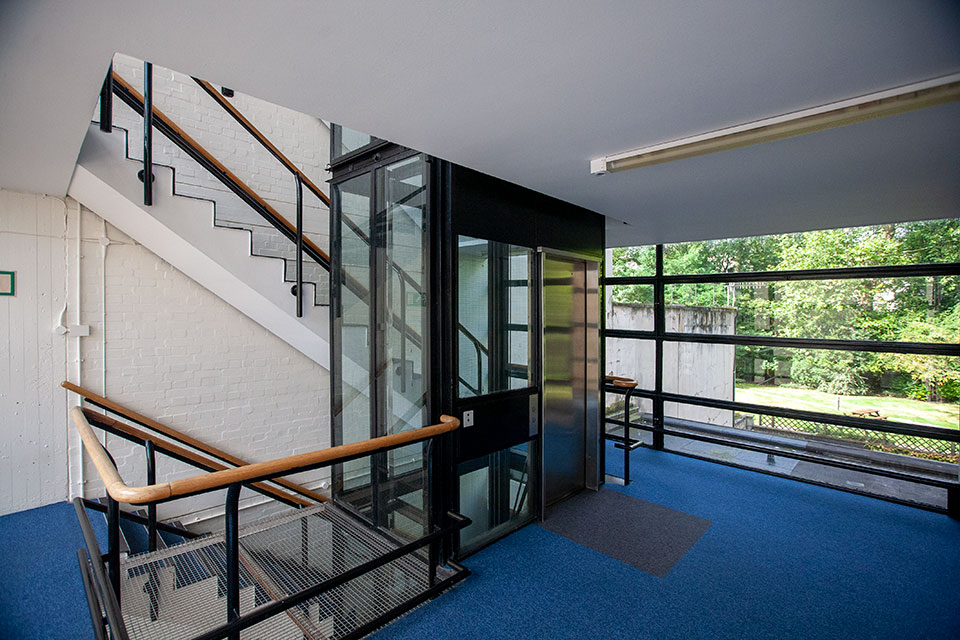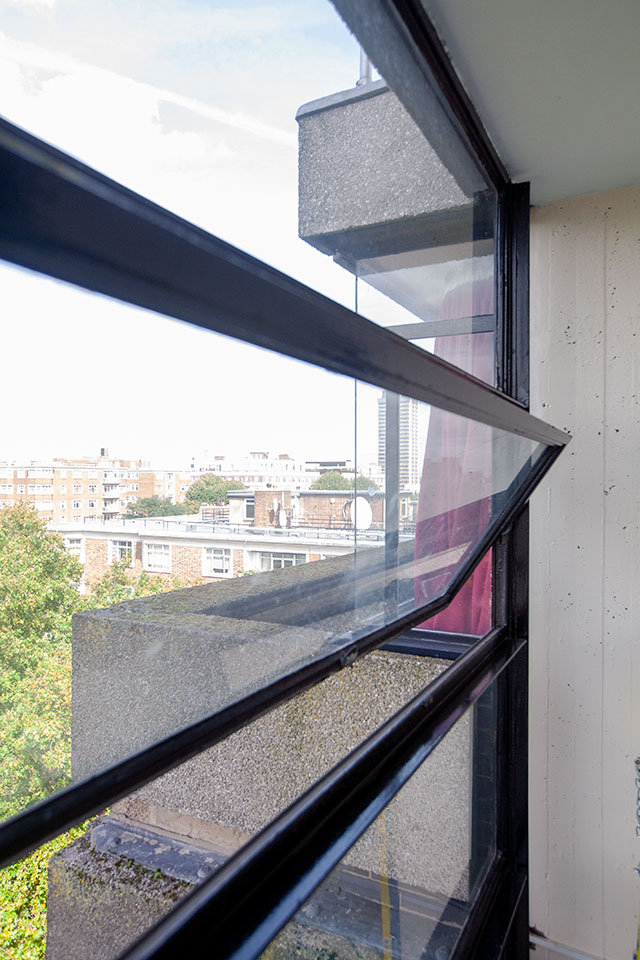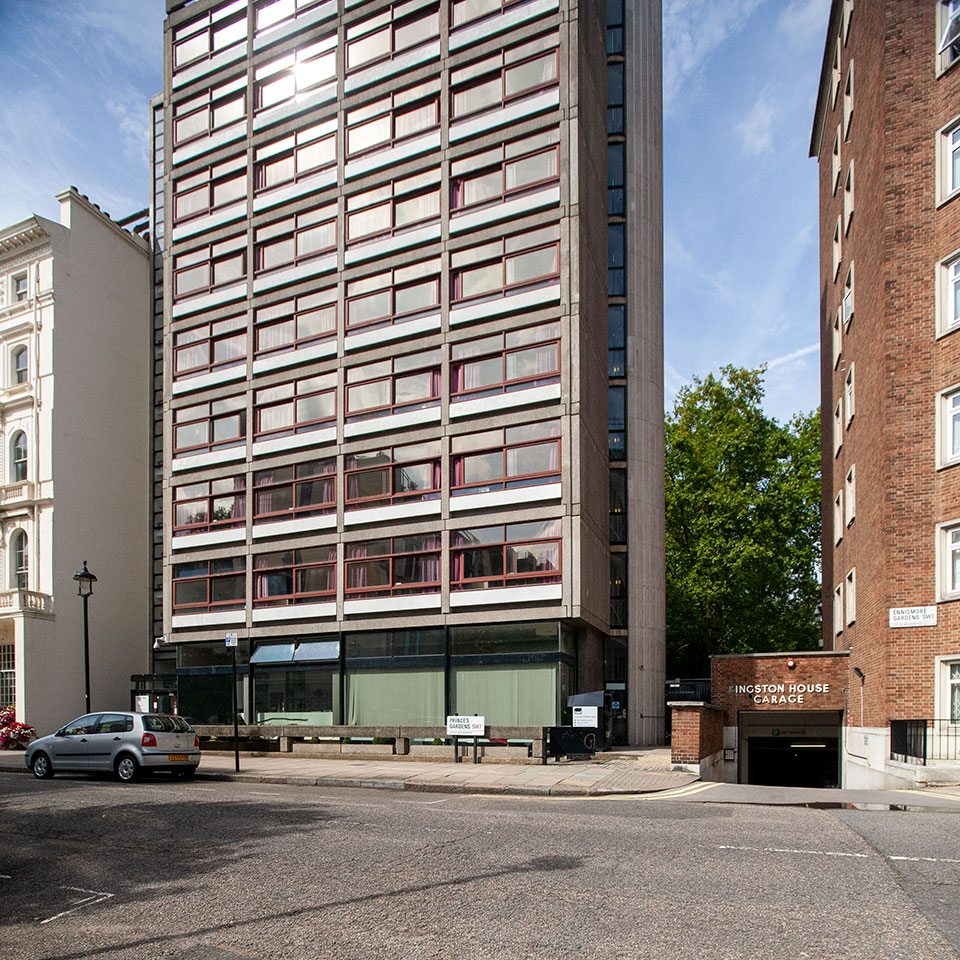Weeks Hall
1959
This is the only remaining part of an extensive complex of halls of residence designed by Sheppard Robson and Partners for Imperial College London. The scheme flanked three sides of Princes Gardens and despite the New Brutalist language of the buildings, they adopted the original terrace lines to retain the sense of enclosure given by the square. This building was the first of the group and was completed in 1959, making it one of the earliest purpose built halls of the post-war period. It was described as a 'prototype' in the Architects' Journal, both for the buildings to come at ICL and for the forthcoming expansion of university building nationally which would see student numbers rise from 84,000 in 1948 to 130,000 by 1970 [1]. The 10 storey tower was organised around the study-bedroom as a basic unit. Eight such rooms were grouped together and shared sanitary and cooking facilities over eight floors with the top floor home to the warden and the ground floor dedicated to communal spaces including a dining room and common room. The scheme was financed by arms manufacturer Vickers, which signified the close relationship between technical education in the 1950s and the race for rearmament in the Cold War. The halls were named after Lord Weeks, the former chairman of Vickers [2]. Constructed from a mix of in-situ (structural) and pre-cast (cladding) concrete, the attention to detailing remains evident, commentators of the period drew attention to the street numbers cast into the fence and the incorporation of a telephone shelf into the in-situ walls on each floor. The glazed lift shaft was considered a 'tour de force' [3]. The standalone nature of this part of the complex contrasted it against the horizontal arrangements of the buildings that followed and was ultimately its salvation. The rest of Princes gardens was demolished in 2005, despite the south block carrying a Grade II listing. Cost savings in the onward construction of the larger horizontal blocks meant that the concrete was not of as high quality as Weeks' and much had deteriorated to the point where netting was required to catch falling chunks of pre-cast.
[1] Architects' Journal, 10 November 1960, p.688
[2] https://www.british-history.ac.uk/survey-london/vol45/pp205-209
[3] Architects' Journal, 10 November 1960, p.689
